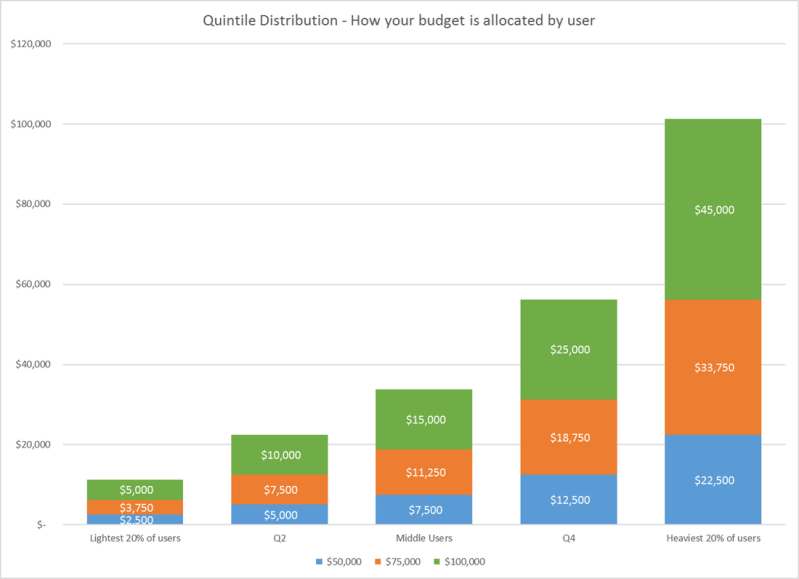Ever had this nightmare?

I am sitting in this meeting.
The guy at the front drones on and on about the latest and the bestest tool in the toolbox. I am thinking “if he says ‘push the envelope’ or ‘out of the box’, I’m leaving”
Naturally, the next phrase out of his mouth is “and we are very happy to bring this tool that will allow you to push the envelope and think out of the box”
I try to leave. My hands are glued to the table and my feet are tied to the chair.
Familiar Nightmare?
I have been a fan of the music industry since my 20’s, when I was a rock & roll photographer for a music magazine. One of the key success factors for a successful piece is the mixer or, as we call them, the producer.
Have you ever seen a record being produced? The producer sits at a huge table full of sliders and knobs. The sliders address the individual mikes and break down the instruments by their sound spectrum (low to high) and the knobs adjust the volume given to each one.
By mixing all the different sounds, a producer then crafts the track. It is not a simple thing. The going rate for producers is around $30,000 per track according to trade magazines, but a star producer will charge many times that figure.

To the point: Planning today needs to move away from this non-sense of “toolboxes” and “tools” and other binary “things” and realize that your Persuasion Platform must adapt to the fluidity of your consumers. Or, to put it succinctly: Everything moves in a continuum.
Strategic Planning in advertising is not really that complex. There are only three major variables:
1️⃣ Your consumers (and what moves them)
2️⃣ The touchpoints to reach them (your media)
3️⃣ The message you put in the media to persuade the consumer to do whatever it is that you want to persuade him/her to do
The problems begin when advertising over simplify this
😱 They focus on only one consumer, often, on a really broad, unrealistic, mythical one. For example, Women 18-49.
😱They treat media binarily (THIS is television, THAT is digital…)
😱They think in terms of a single message with no adaptation or personalization

Advertisers and agencies often forget that, in real life, the cycle is like this:
You have several consumer groups, the members of this group consume different media at the same time and for different reasons and no single message will be effective in every situation.

In real life, there are many consumer segments, which are reached via many touchpoints and need many different messages
Can you apply this to your small or medium-sized business?
Even if you are a small business (say, a 2 person CPA firm) you can still apply the same principles to your advertising with a relatively simple grid:
A good first step is the simple task of understanding your customer base. Let’s say you are a small CPA firm. Perhaps you wind up with a picture like this:
- Young heads of households who need to start saving: 50%
- Small company owners: 30%
- Retirees who need to stretch their budget: 20%
Obviously each of those groups would need customized messages and would require a quick analysis on your part:
- Size of the group
- Profitability
- Growth potential


When you buy "more of the same" you hardly reach new customers. You just pile up more and more money on the same customers.
Quintile Distribution and Media Planning
An arcane tool –quintile distribution—gives us a roadmap to contact planning. A quintile distribution is simple tool: it divides any universe into five equal segments. As a result, we can compare the behaviors of light users, medium users, heavy users, quickly and effectively.
Every medium follows pretty much the same behavior: 45% or 50% is consumed by its heaviest users. 5% is consumed by its lightest users. If you buy more of the same media, you pile up on the same users.
So let’s say you buy three levels: $50,000, $75,000 and $100,000. This is how your money would fall:
This is not necessarily “good” or “bad”. But certainly, you would want to understand what is happening to your media budget and make decisions.
Your small to medium-sized business mixer
As an SMB you have a fairly ample range of choices. They go from networking groups to e-mail, AdWords, social media, radio, and print all the way to direct mail, out of home and many others.
Strategic planning will help you decide which touchpoint to use and when and how much to invest in it. We do that via a combination of:
- Your own sales goals
- Volume/audience
- Costs
- Conversion ratios
- KPI’s

Speaking to one person at a time.
Fairfax Cone (one of the founders of Foote Cone & Belding) said: Good advertising is written from one person to another. When it is aimed at millions it rarely moves anyone.
Dynamic Creative Optimization does give us the option of generating dozens of ads in the web. But, even in more traditionally unwieldy media, good strategic planning will allow you to:
- Obtain key consumer insights from each group
- Isolate it
- Deliver the message that creates the highest persuasion
In summary
- It’s not a toolbox, it’s a mixer.
- Everything in advertising and marketing moves in a continuum.
- A successful small or medium-sized business must move away from the simplistic “consumer à contact point à message” triangle and analyze its sources of business, contact points and customized messages.

